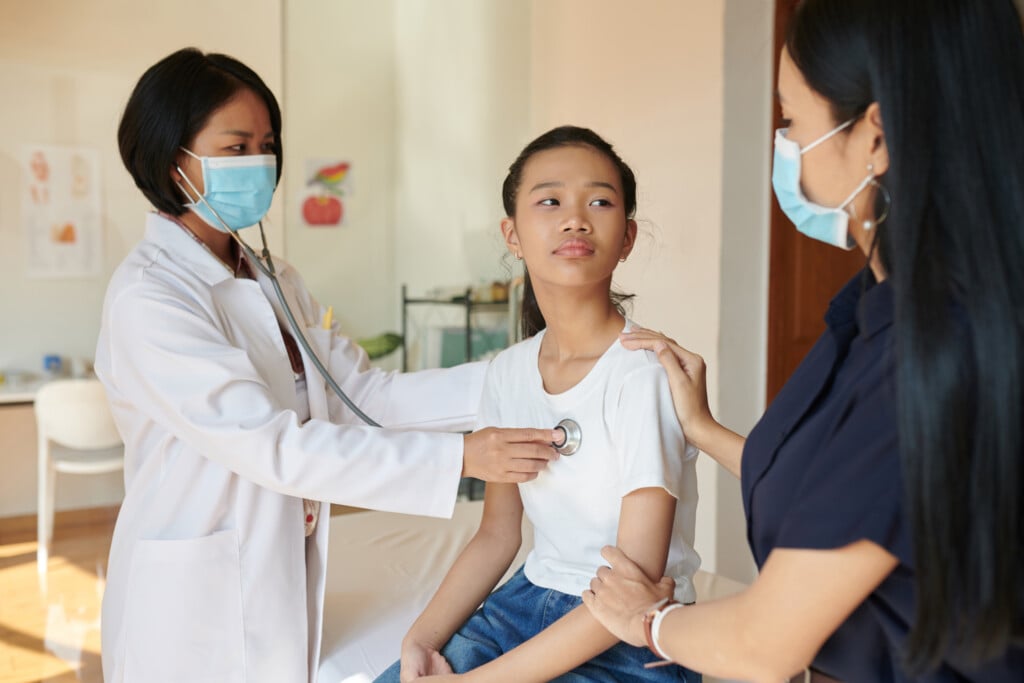Teens and Young Adults with Cancer Require Unique Care

Although we sometimes forget, teenagers aren’t miniature adults. Their needs – everything from nutrition and sleep to exercise and psychological/emotional support – vary significantly from their grown-up counterparts, as do their challenges. Health care is one area where this is particularly evident. In general, teens and young adults face different health risks than adults, and consequently, require a different approach to prevention and treatment. This is especially true when it comes to the diagnosis and management of cancer.
Overview
According to the American Cancer Society, approximately 90,000 adolescents and young adults (ages 15-39) are diagnosed with cancer each year. Although this number accounts for only 4.2% of the country’s annual cancer diagnoses, cancer appears to be on the rise in this younger population, and it’s the fifth leading cause of death. The most commonly occurring cancers are breast, thyroid, testicular and melanoma, with thyroid and Hodgkin’s lymphoma more prevalent among 15-19 year olds.
“When thinking of this population, they are truly a unique subset of patients whose diseases may behave differently from their pediatric or adult counterparts and therefore really need to be classified into their own group,” notes Danielle Blair, an Adolescent and Young Adult Program Nurse Navigator at the Children’s Cancer Institute and John Theurer Cancer Center in New Jersey’s Hackensack University Medical Center.
Challenges
Adolescent and young adult (AYA) cancer patients face distinctive challenges, both physically and emotionally.
“These patients are living in an incredible time of transition and life milestones. They may be in school, either high school, college or even graduate school. They’re learning to be functioning adults, which includes learning independence, problem-solving skills, social interactions, financial responsibilities, etc. They may be starting new careers or moving away from home. They’re developing relationships, friendships or romantic relationships, for example, and may be even creating families,” Blair says. “All of this comes to a screeching halt when you add a cancer diagnosis into the picture.”
As a result, Blair says, the experience can be very isolating. AYA patients may experience depression and anxiety, as well as concerns about fertility (related to treatment) and finances.
While the five-year survival rates for children and older adults with cancer diagnoses have drastically improved over the last 30 years, survival rates in the AYA population have remained relatively unchanged due to a number of factors specific to that population.
For example, AYA patients often experience a delay in diagnosis, which can result in a cancer that is later-stage, and thus more difficult to treat and cure. This can happen because adolescents and young adults may not know their family medical history, including any predisposition to cancer. They may not recognize cancer symptoms, either. A lack of medical insurance, or discomfort talking to medical professionals can also come into play. In addition, AYA patients may not adhere to the medical treatment plan, and low AYA participation rates in research-based clinical trials translates into a lack of data to use in developing newer, better treatment options.
AYA-specific care
Fortunately, as the medical community and general public have become more aware of the distinct needs of the AYA population, more facilities are developing designated AYA cancer programs to address them.
“These [AYA cancer] programs serve as a bridge between adult and pediatric centers in order to fill known gaps in AYA care and to provide age appropriate, as well as medically appropriate, care,” Blair says.
According to Blair, an integrative and “full team approach to cancer care,” which exists in many pediatric cancer programs and includes services like creative arts and financial and family support, is a good model for developing AYA-focused programs.
“To effectively support the AYA population, collaboration between pediatric and adult centers will be key, as these patients will be cared for in either setting depending on a variety of factors such as diagnosis, treatment plan, and research study availability, as well as age and geographic location,” she says.
AYA cancer care in Oklahoma
If you live in Oklahoma, there are several medical facilities with AYA-specific cancer programs or AYA support integrated into their services. The OU Health Stephenson Cancer Center, 800 NE 10th St., Oklahoma City (and recently expanded to the Schusterman Center on the OU Health Tulsa campus), is the state’s only National Cancer Institute-Designated Cancer Center. The Oklahoma Children’s Hospital Jimmy Everest Center in Oklahoma City provides specialized pediatric cancer care, including diagnosis for cancer conditions in children and teens. More at ouhealth.com.
Saint Francis Children’s Hospital in Tulsa also provides pediatric and adolescent cancer care. The Hospital’s pediatric hematology/oncology outpatient clinic is an affiliate of St. Jude Children’s Research Hospital. More at saintfrancis.com.
 Julie Wenger Watson is a freelance writer who’s worked in all aspects of music promotion. She’s also Co-Director of “Live From Cain’s,” a public radio show pilot.
Julie Wenger Watson is a freelance writer who’s worked in all aspects of music promotion. She’s also Co-Director of “Live From Cain’s,” a public radio show pilot.




